Laptop Charger – MacBook Charger
Laptop Charger – MacBook Charger
When need this service:
What to Do if Your Laptop Is Plugged In But Not Charging
How many times has this happened to you? You’re minding your own business on your laptop, then suddenly the computer informs you the battery is nearly dead. You then have to rush to find your charger and plug it in before everything goes dark.
Once the power is connected, you should be good to go, but sometimes you plug in the AC adapter, and you get nothing. No glowing lights, no brightened display, and no “battery charging” icon in the corner. What could be wrong?
There are numerous ways to take care of your battery, but between the wall outlet and your computer there are also several things that can fail. Some are easy to fix yourself with a software tweak or a new battery, but other problems may require a visit to a repair shop, or even a full-blown system replacement.
Knowing which is which can save you hours of frustration and hundreds of dollars in repairs. Here’s how to quickly troubleshoot the issue in order to quickly narrow down where the problem originates and find the most economical solution.
1. Are You Actually Plugged In?
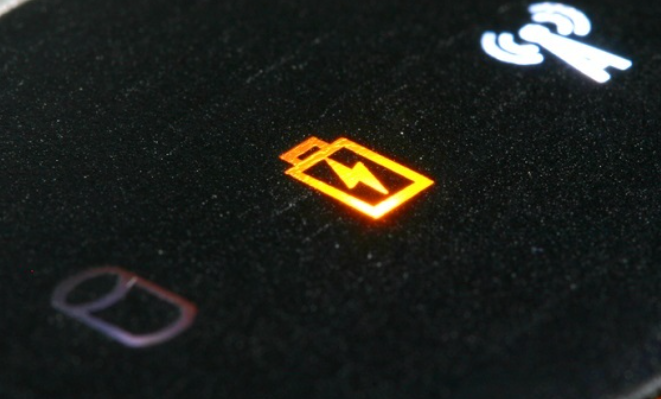
So before you do anything else, ensure that the charger is firmly seated in both the wall outlet and the charging port. Similarly, check the AC adapter brick and verify that any removable cords are fully inserted.
To find out whether or not the problem even has anything to do with the laptop at all, try plugging the power cord into a different outlet. If it’s plugged into a surge protector or power strip, take it out and plug it directly into the wall. This will tell us if there’s an issue with the laptop or if you have a short or a blown fuse.
At this point, if it still doesn’t work, we’ve determined that it’s not just user error causing the problem. There is a real issue with powering the laptop; now it’s simply a matter of figuring out where the problem may be. That begins with eliminating where it isn’t.
2. Check the Cable
Feel along the length of the power cord, bending and flexing as you go, to check for any kinks or breaks. Check the ends for any broken connections, such as plugs pulling loose or spots that may have gotten chewed by a pet or caught in a vacuum cleaner.
Inspect the AC brick. Is it discolored? Are any parts warped or expanded? Give it a sniff—if it smells like burnt plastic, that’s likely where the trouble lies. You may need to replace the power connector. Contact the manufacturer and see if they’ll send you a new one under warranty. (Or, barring that, if they’ll sell you one directly.)
When you plug in the laptop’s power connector, the connection should be fairly solid. If there’s dust or other buildup inside the jack, it may not be able to make a clean connection. Check the charging port’s contact points and try cleaning out the area with a toothpick if it looks dirty.
In more extreme cases, you may find the jack is wobbly or loose, or gives when it should stay firm. This could mean the power jack has broken inside the chassis, and you’ll need to take your computer to a repair shop (or, if you’re comfortable opening it up, doing some at-home repairs).
3. Make Sure You’re Using the Right Port
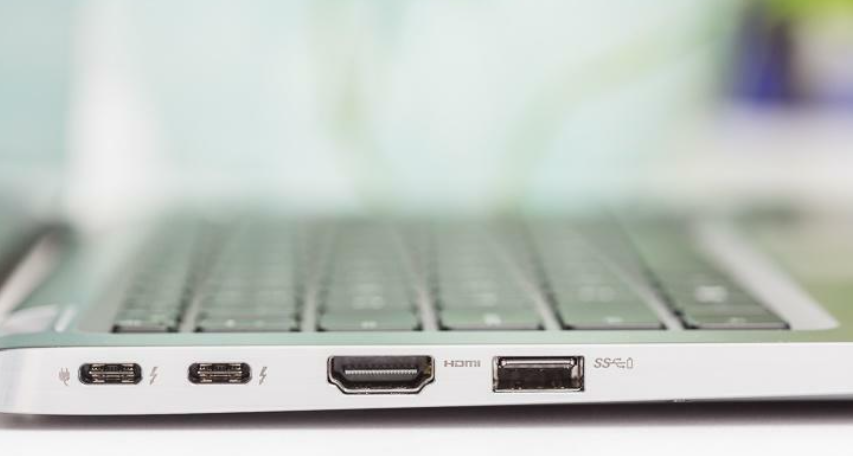
In some cases, you may find a device with two USB-C ports: one that can be used for charging or data transfer, and one that is only designated for data transfer. If you run into a non-charging issue, make sure you are connected to the correct USB-C port. You may even be able to see a little icon on the side that indicates which port is meant for charging.
4. Is Your Charger Powerful Enough?
Check the wattage of the charger that came with your laptop—if it came with a 45W charger, you’ll probably want some as strong (or higher) to power it, and so on. A lower-wattage charger might keep the battery from draining while you use it, but it won’t be enough to charge it any higher. If it does manage to recharge your computer, it will do so much slower than usual.
While we generally recommend using the charger that came with the computer (or one that was made by the same company as your laptop), sometimes third-party USB-C chargers are necessary. If this is the case, try to use one that’s been certified by the USB-IF(Opens in a new window).
For laptops that don’t charge over USB-C, you should stick with the manufacturer’s official charger. Cheap, no-brand chargers you find on Amazon may cost less, but they are generally low quality and can even be dangerous.
In most cases, your best bet is to contact the manufacturer directly and order a replacement charger, if you can. It will be a little more expensive, but you will know that you are getting a quality component.
5. Lose the Battery
You also need to check the integrity of the battery. If your laptop comes with a removable battery, take it out, and hold the power button down for about 15 seconds to drain any residual power from the device. Then, with the battery still removed, plug the laptop into a power outlet and try turning it on.
If the laptop powers on properly, that means the power adapter is working properly and the problem is likely a bum battery. You can always re-install the battery and try again—maybe the battery was just poorly seated.
If your laptop doesn’t have a visible battery compartment on the bottom, it may be built into the laptop (like most Macs are), and you’ll either have to open it up yourself or take it to a repair specialist to test the battery.
6. Beat the Heat
Batteries are susceptible to heat, so if your laptop is overheating, that could cause a problem. As the temperature rises, the battery sensor may misfire, telling the system that the battery is either fully charged or missing completely, causing the charging problems. You may even find that your system shuts down to prevent overheating a battery and causing a fire.
These problems become far more likely when dealing with older laptops, which have lower-quality cooling than more modern devices—or if you tend to use the laptop on the couch or in bed, which can block the cooling vents. Turn the system off, give it some time to cool down, and take a moment to make sure the air vents are free of dust and unobstructed by blankets.
If overheating is a recurring issue, you may want to grab a simple piece of software that can monitor your CPU temperature. Core Temp for PCs and Fanny for Macs can help you keep track of internal temperatures so you can better manage the issue.
7. Check Your Settings in Windows or macOS
If your power settings have been changed, it’s easy to suspect a power malfunction even though there’s no physical problem with the battery or charging cable. Windows users can open the Start menu and search for “Power & Sleep Settings,” then click the Additional power settings link.
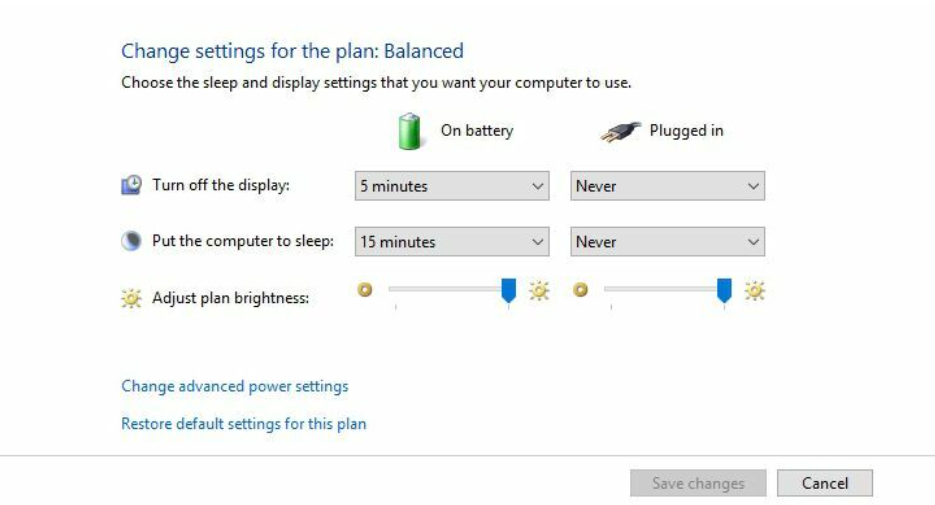
You can also assign actions like sleep and shut down when your lid is closed or the power button is pressed. The easiest way to make sure that your settings aren’t causing problems is to restore the power profile to default settings.
Mac users can open System Preferences > Energy Saver, then review your preferences. Mac settings are adjusted with a slider, letting you select the amount of time the computer can sit idle until it goes to sleep. If the interval is too short, you might suspect battery issues when settings are the true culprit.
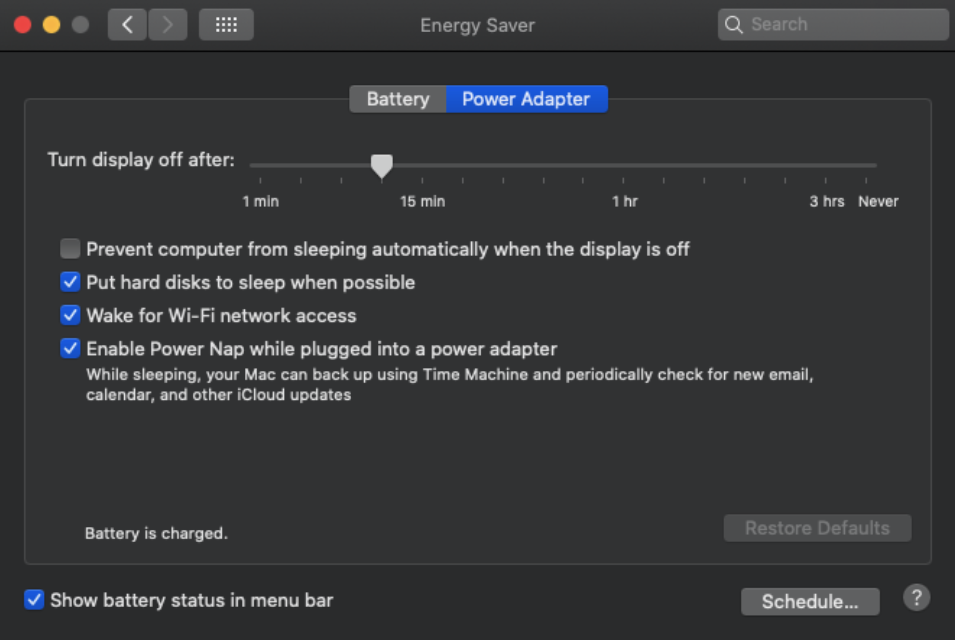
8. Update Your Drivers
In rare instances the problem could be a faulty driver. Open the Start menu and search for “Device Manager.” Under Batteries, you should see a few items: usually one for the charger and one listed as Microsoft ACPI Compliant Control Method Battery, though there may be others. Right-click each item and choose Update Driver.
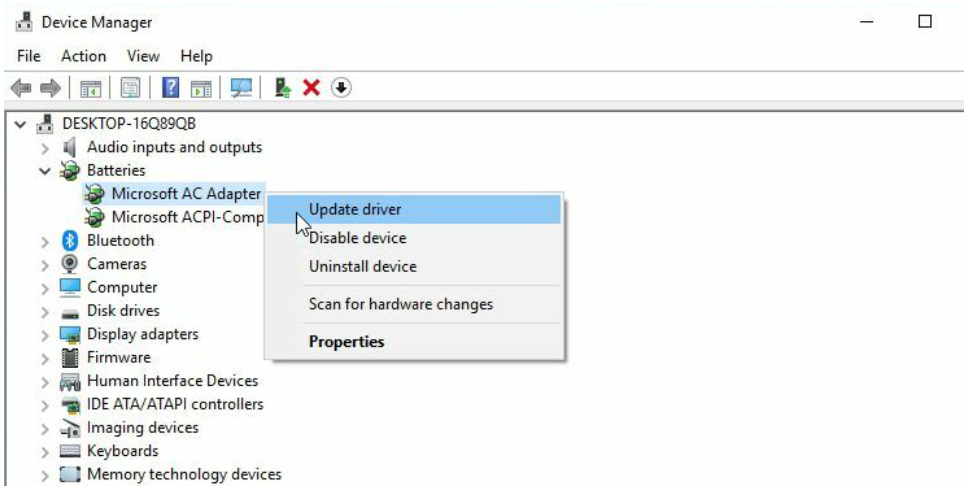
On a Mac, you’ll need to try resetting the System Management Controller(Opens in a new window) (SMC). For laptops with removable batteries, this is as simple as shutting down and disconnecting the computer, removing the battery, and then pressing the power button for five seconds. Reinsert the battery, reconnect the charger, and fire up the laptop again.
For newer Macs with batteries sealed into the chassis, shut down the computer but leave the power adapter connected. With the power off, press and hold the power button while pressing Shift + Control + Option on the left-hand side of the keyboard. Release the keys and power button simultaneously, then attempt to power on the laptop.
9. Problems Inside
When all of your options are exhausted—you’ve tried other power cables and batteries, checked and rechecked your settings, fixed any potential software problems—the problem is likely found in a part of the machine you can’t fix yourself. This is probably a good time to contact Pro Computer.
Several internal parts can cause problems when they malfunction or fail. Common culprits include a faulty motherboard, damaged charging circuits, and malfunctioning battery sensors. Your particular make and model of laptop will likely have its own unique issues, and a seasoned tech support operator like Pro Computer will have seen all of them.
Useful tech hints:
Choosing a Replacement Charger for your Laptop
Introduction
If you’re like me, you can’t be without your laptop. From daily work, to taking notes in meetings and even entertainment at home, your laptop goes everywhere with you.
All of that productivity and entertainment a laptop offers needs power to keep it going, and a broken or lost laptop charger or power cord will quickly leave you scrambling for a replacement. You may even want to pick up an extra charger so to save you carrying extra cables.
So what do you choose? In this article we run through the three main types of laptop power supplies and how you can pick a safe, reliable and affordable replacement.
Before we delve into the main categories of replacements offered by sellers online (including ourselves!), lets run through the key steps of finding what charger you need.
How to find a compatible replacement laptop adapter
To see what kind of replacements are on offer online for your laptop, you’ll need some extra information on the model of the machine. Laptop manufacturers use all kinds of connections for charging laptops, and each vary in terms of wattage.
Identify your laptop’s model numberThe easiest way to find your laptop model number is by taking a look at the sticker usually placed on the underside of your laptop. Among information such as serial number, warranty, towards the top of the label should be the full model number or identifier. This might look like one of these:
- HP EliteBook 850 G5
- Toshiba SATELLITE PRO 6100
- Lenovo YOGA 500-14ACL
- Samsung NP350V5C-A01UK
It’s always important to look for the main model number rather than the ‘range’ listed around the keyboard as this isn’t always enough detail to find the right charger for your device.
If you can’t locate the sticker or it’s difficult to read, you could take a look at the original invoice/receipt or check the manual that came with your laptop. If the laptop hasn’t discharged completely, you can also find the model number on the powered on machine
Find your laptops wattage
When using our site, this isn’t essential as we list replacement power supplies based on their precise model number, and they’re guaranteed to work for your device. However, it’s always good practice to understand the power requirements for your laptop.
The main element you’ll want to look for is the output voltage for the charger (sometimes referred to as DC voltage). Check in your laptop manual for the voltage requirements or look at the original power supply if you still have it. It will often be something like this:
OUTPUT: 19VDC 3.42A
By multiplying the output voltage and amps you can calculate the total wattage of your machine, in this case 65W after rounding up.
Take a note of the voltage, amperage and wattage so you can match up those listed for the replacement charger with your own laptop’s requirements.
The types of replacement laptop chargers available
Now you’re armed with the information to be able to source a replacement charger, let’s run through the most common ‘types’ of laptop power supplies available online:
OEM Laptop Chargers (Original Equipment Manufacturer)
When you first bought your laptop, the charger you received with the laptop was an OEM power supply. Usually this charger will have been manufactured by a third party power supply manufacturer on behalf of the company. Common OEM brands include Delta, ACBel and LiteOn. With leading laptop manufacturers such as HP, Samsung and Lenovo, the charger is usually branded with their logo.
Advantages of buying an OEM laptop charger
- It’s exactly the same in function to your original charger, so you can expect the same performance
- Providing you buy the correct charger, it’s guaranteed to work with your laptop.
Disadvantages of buying an OEM laptop charger
- OEM chargers can be difficult to source, particularly for older models of laptop; the OEM manufacturer may no longer produce the charger for your laptop.
- Pro Computer made it easy by collect almost every popular model in stock.
Universal Laptop Chargers
Universal chargers are commonly available as replacements for many of the leading laptop brands. Some even span multiple brands and are packaged with multiple sets of ‘tips’ or ‘pins’, the part of the charger that connects directly to your laptop. Measuring the pin size required for your laptop can be a real challenge and impossible if you no longer have the original charger to hand.
Universal laptop power adaptors are always produced by third party brands, and the same power supply is often re-branded by different companies across popular marketplaces.
- They are usually affordable
- If you have multiple laptops that the universal charger is compatible with, you can use the charger on each laptop
Disadvantages of buying a Universal Laptop Chargers
- You’ll need to research the pin size required for your laptop before purchasing. A quick browse of several popular universal laptop PSU’s on Amazon shows many negative reviews from customers who found the supplied tips didn’t fit their laptop. Attempting to fit the wrong pin in your laptop can be downright dangerous and permanently damage your laptop.
- There are no guarantees on quality.
- By nature of a universal charger, many of its parts are removable (such as the pin section). These can be wobbly or poorly fitting and will degrade over time.
- Finally, many universal laptop chargers have a switch to manually select the required voltage. Plugging the charger into your laptop with the wrong voltage selected can cause irreversible damage to your laptop.
In summary for universal laptop power adaptors, we can’t recommend them as there are too many factors that can risk causing damage to your laptop.
FAQs
1) I forgot my MacBook charger in the hotel. Do you have one for sale?
A: Yes. Pro Computer keeps almost every model of Apple, HP, Dell, Lenovo and other brands laptop charger in stock.
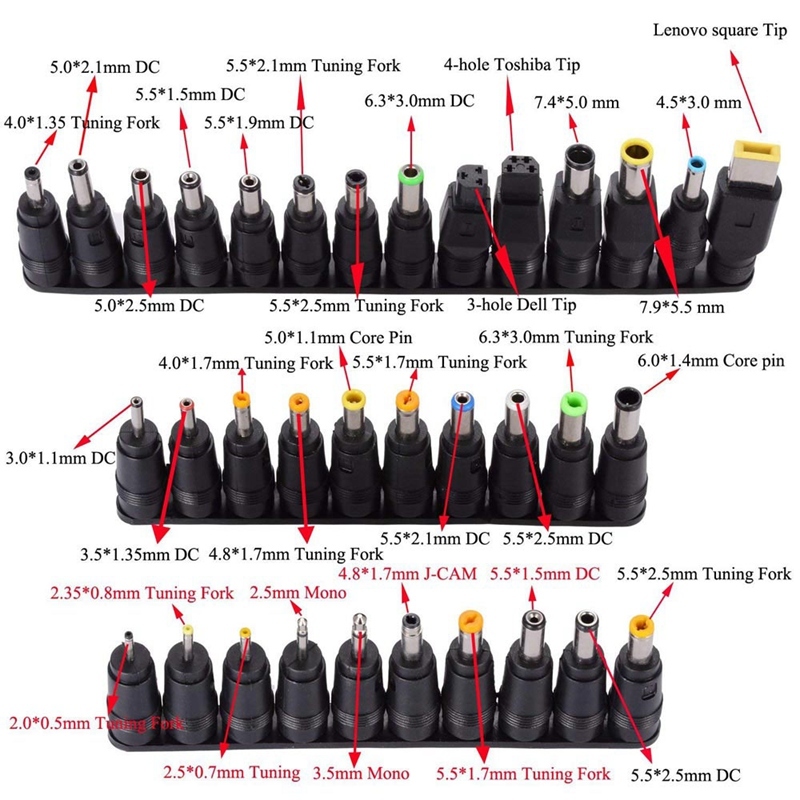
2) Do you fix laptop charging port/ DC jack?
A: Yes. Replace laptop charging port / DC jack is a daily routine at Pro Computer. Most of the Dell/ HP DC Jacks are in stock and available for same day service, please text or call Pro Computer to make appointment in advance.
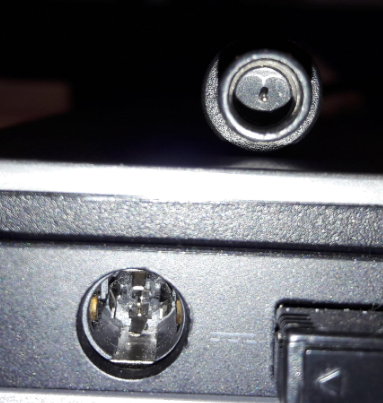
Thanks for the great customer service and high quality of your products. The quality of your laptop is exceptional at bargain price.
Request a Free Quote
"*" indicates required fields
